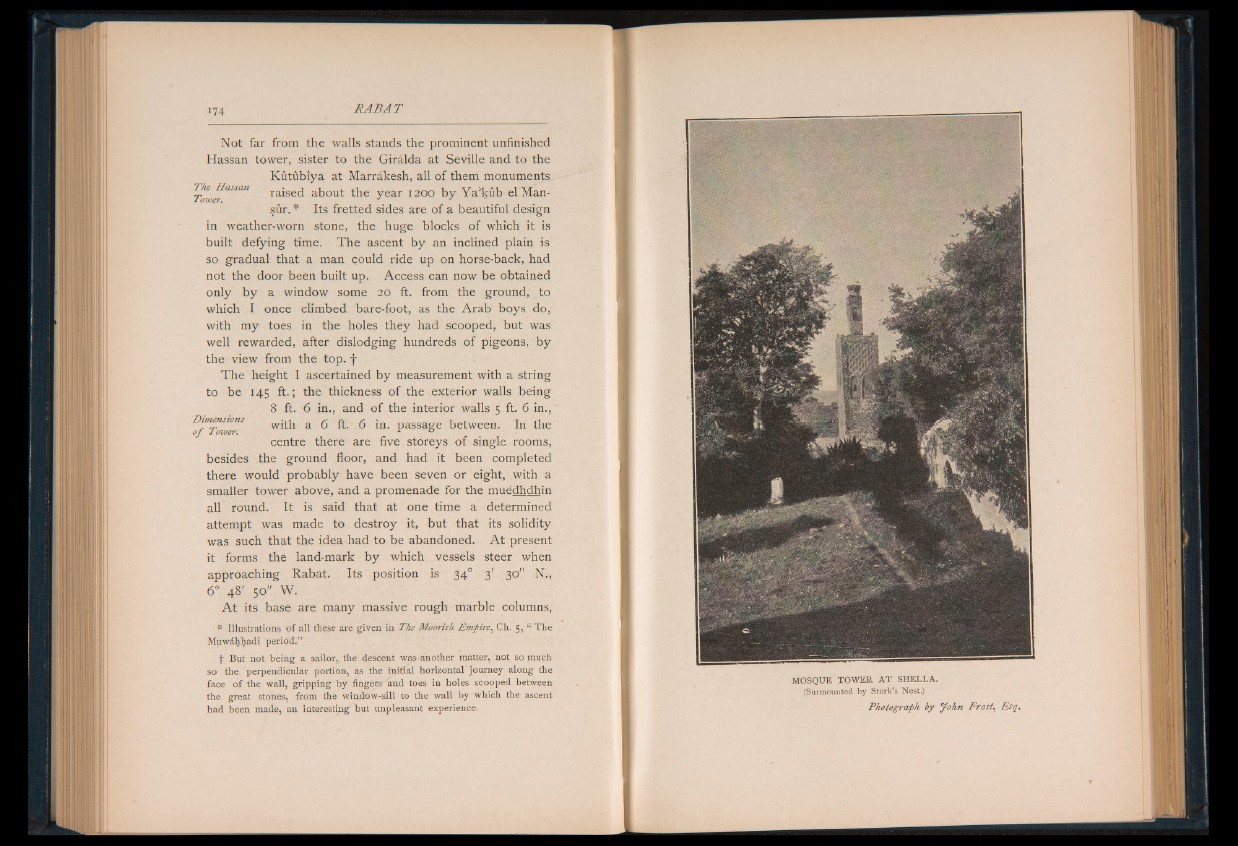
m R A B A T
Not far from the walls stands the prominent unfinished
Hassan tower, sister to the Girâlda at Seville and to the
Kûtûbîya at Marrakesh, all of them monuments
The Hassan rajsecj about the year 1200 by Y a ‘kûb el Manlower.
J J
sûr.* Its fretted sides are of a beautiful design
in weather-worn stone, the huge blocks of which it is
built defying time. The ascent by an inclined plain is
so gradual that a man could ride up on horse-back, had
not the door been built up. Access can now be obtained
only by a window some 20 ft. from the ground, to
which I once climbed bare-foot, as the Arab boys do,
with my toes in the holes they had scooped, but was
well rewarded, after dislodging hundreds of pigeons, by
the view from the top. f
The height I ascertained by measurement with a string
to be 145 ft.; the thickness of the exterior walls being
8 ft. 6 in., and of the interior walls 5 ft. 6 in.,
Dimensions a 6 ft. 6 in. passage between. In the
o f lower, 1 °
centre there are five storeys of single rooms,
besides the ground floor, and had it been completed
there would probably have been seven or eight, with a
smaller tower above, and a promenade for the muédhdhin
all round. It is said that at one time a determined
attempt was made to destroy it, but that its solidity
was such that the idea had to be abandoned. A t present
it forms the land-mark by which vessels steer when
approaching Rabat. Its position is 340 3' 30" N.,
6° 48' 50" W.
A t its base are many massive rough marble columns,
* Illustrations of all these are given in The Moorish Empire^ Ch. 5, “ The
Muwâhhadi period.”
f But not being a sailor, the descent was-another matter, not so much
so the perpendicular portion, as the initial horizontal journey along the
face of the wall, gripping by fingers'and toes in holes scooped between
the great stones, from the windbw-sill to the wall by which the ascent
had been made, an interesting but unpleasant experience.